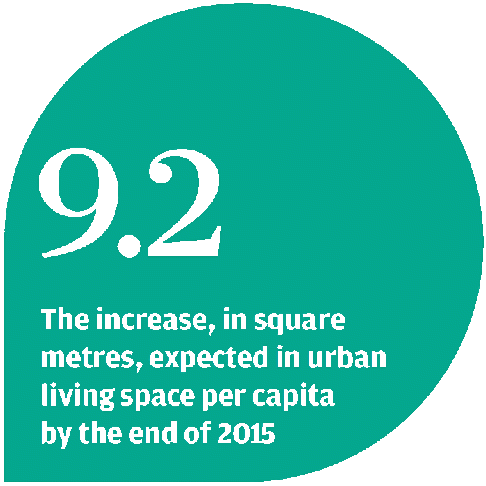
Warning on perils of home oversupply in second- and third-tier cities
Land-selling sprees by local governments as they cash in on reserves to repay debts has led to a surge in living space on mainland, analysts say
Many applaud the strategy adopted by Beijing's new leaders to contain housing inflation by increasing supply instead of curbing demand.

Worries about a possible property bubble that may eventually burst have been hanging over the world's second-largest economy for many years.
The authorities have tried for more than a decade to rein in rapidly rising home prices, but in vain. Until now home prices have soared well above the level that average families can afford.
Yet they are still rising stubbornly, puzzling investors who have been left wondering where the strong demand is coming from.
Some demand is hard to gauge and is often much stronger than expected, particularly in the case of property as an investment option for a rising number of rich and risk-savvy buyers.
On the supply side, many cities have gone on a land-selling spree in the past four years, as local governments have sought to cash in on their land reserves to repay trillions of yuan of debts.
"Many cities, particularly second- and third-tier cities, have serious problems of home oversupply," said Huang Yu, executive deputy dean of the China Index Academy, a top private real estate research institute and data provider. "We must not overlook this problem."
A recent report by the Academy, carried out with a think tank at the Ministry of Housing and Urban-Rural Development, estimated that the total land sold between 2010 and last year - including residential land under construction and newly-started projects - will increase the mainland's urban living space by 9.2 square metres per capita by the end of 2015.
That means the per capita urban living space will be increased to 40 square metres by the end of 2015. That is the level developed economies usually reach when their urbanisation rate hits 70 per cent, Huang said.
The estimates did not include new land supply from this year up to 2015.
The National Bureau of Statistics, after a population census, said urban living space per capita was 30.9 square metres in 2010.
It is forecast that the per capita living space in Ordos, a notorious ghost city in the northern Inner Mongolia region, will hit 60 square metres by 2015. Also, it will reach 57 square metres in Nantong, in the prosperous Jiangsu province, according to the report.
Both are extreme cases, however. And top cities including Beijing and Shanghai will still suffer from a supply shortage, Huang said.
She is not alone in sounding the alarm.
The Survey and Research Centre for China Household Finance at the Southwestern University of Finance and Economics in Chengdu warned last year that housing demand would not be robust in the next few years and developers would be building more houses than were needed. Data from the centre showed urban families had an outstanding demand for 64.6 million homes last year.
It showed new demand during the years between 2011 and 2015 would total 28.9 million units, excluding demand from families seeking to buy bigger homes or upgrade.
All this demand can be met within two years - by next year, considering the current capacity of developers.
"The basic feature of China's real estate market is that supply exceeds demand, but prices still rise on expectations," said Gan Li, head of the centre.
"So the strategy for the government should be to reduce supply of new homes, and activate transactions of existing homes while correctly guiding expectations on prices."

